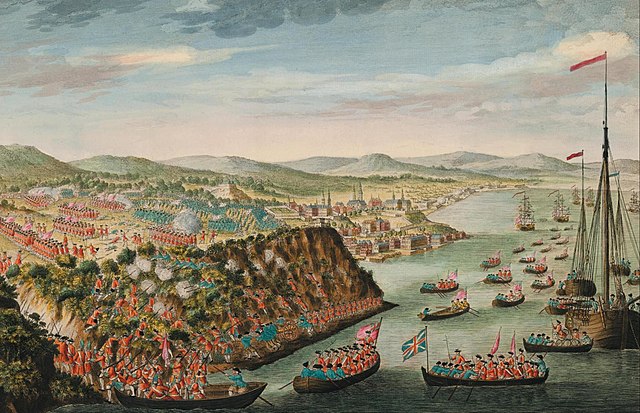William Howe, 5th Viscount Howe
William Howe, 5th Viscount Howe,, was a British Army officer who rose to become Commander-in-Chief of British land forces in the Colonies during the American War of Independence. Howe was one of three brothers who had distinguished military careers. In historiography of the American war he is usually referred to as Sir William Howe to distinguish him from his brother Richard, who was 4th Viscount Howe at that time.
Engraving by Henry Bryan Hall
Engraving from contemporary sketch depicting the British ascent to the Plains of Abraham in 1759
Depiction of the Battle of Bunker Hill by Percy Moran, 1909
George Washington, driven from New York beginning at the Battle of Brooklyn portrait by Charles Wilson Peale 1776
Commander-in-Chief, North America
The office of Commander-in-Chief, North America was a military position of the British Army. Established in 1755 in the early years of the Seven Years' War, holders of the post were generally responsible for land-based military personnel and activities in and around those parts of North America that Great Britain either controlled or contested. The post continued to exist until 1775, when Lieutenant-General Thomas Gage, the last holder of the post, was replaced early in the American War of Independence. The post's responsibilities were then divided: Major-General William Howe became Commander-in-Chief, America, responsible for British troops from West Florida to Newfoundland, and General Guy Carleton became Commander-in-Chief, Quebec, responsible for the defence of the Province of Quebec.
Military Governors and Staff Officers in garrisons of British North America and West Indies 1778 and 1784





